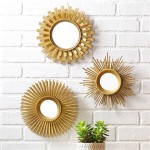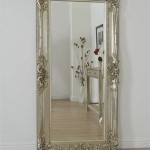Adhesive Solutions for Mirror Installation: A Guide to Glue for Mirrors
The installation of mirrors, whether in a bathroom, bedroom, or as part of a decorative feature, necessitates careful consideration of the adhesive used. Selecting the appropriate glue for mirrors is crucial for achieving a secure, long-lasting bond and preventing damage to the mirror's reflective coating. This article delves into the various types of adhesives suitable for mirror installation, factors to consider when choosing a glue, and best practices for application to ensure a professional and durable result.
Mirrors are often backed with a thin layer of silver or aluminum to create their reflective surface. This backing is delicate and susceptible to corrosion and damage from certain chemicals found in some adhesives. Using an inappropriate glue can lead to unsightly blemishes, discoloration, and ultimately, degradation of the mirror's reflectivity. Therefore, specialized mirror adhesives are formulated to be neutral and non-reactive with these materials, ensuring the longevity and aesthetic appeal of the mirror.
Understanding Mirror Compatibility: The Importance of Neutral Cure Adhesives
The key differentiating factor between general-purpose adhesives and those specifically designed for mirrors lies in their chemical composition. Many general-purpose construction adhesives contain solvents and acids that can react negatively with the mirror's backing. These reactions can manifest as dark spots, streaks, or a general dulling of the reflective surface over time. Neutral cure adhesives, on the other hand, are formulated to be non-corrosive and chemically inert, eliminating the risk of damaging the mirror's sensitive backing. They typically cure through exposure to moisture in the air, releasing non-aggressive byproducts that do not affect the mirror's integrity.
One common type of neutral cure adhesive is silicone-based. Silicone adhesives offer excellent flexibility and resistance to moisture, making them particularly suitable for bathroom installations where humidity levels are high. However, it is imperative to select a silicone adhesive specifically labeled as "mirror adhesive" or "neutral cure silicone." These products are formulated without acetic acid, which is a common component in cheaper silicone sealants and can cause significant damage to the mirror's backing. Another option is modified silane polymer (MSP) adhesives. MSP adhesives offer similar benefits to silicone adhesives, including flexibility and moisture resistance, but often boast superior adhesion strength and a faster curing time.
When selecting a mirror adhesive, it is crucial to carefully review the product's specifications and ensure it explicitly states compatibility with mirrors. Reading the manufacturer's instructions thoroughly will provide valuable information regarding application techniques, curing times, and any specific precautions to observe. Ignoring these guidelines can compromise the adhesive's performance and potentially damage the mirror.
Furthermore, the substrate to which the mirror will be adhered plays a significant role in adhesive selection. Different adhesives exhibit varying degrees of adhesion to different surfaces, such as drywall, tile, wood, and concrete. Choosing an adhesive that is compatible with both the mirror and the substrate is essential for achieving a strong and durable bond. Some adhesives are specifically formulated for porous surfaces, while others are better suited for non-porous materials. Pre-treating the substrate by cleaning and priming it can enhance adhesion and prolong the life of the installation.
Factors Influencing Adhesive Selection: Weight, Size, and Environmental Conditions
Beyond chemical compatibility, several other factors should be considered when selecting the appropriate glue for mirrors. The weight and size of the mirror are crucial determinants of the adhesive's required strength and holding power. Larger and heavier mirrors demand adhesives with a higher load-bearing capacity to ensure they remain securely in place over time. Insufficient adhesive strength can lead to the mirror detaching from the wall, posing a significant safety hazard.
The type of mirror being installed also influences adhesive selection. For instance, mirrors with a protective backing may require a different type of adhesive compared to those with an exposed silvered surface. Protective backings, often made of paint or a polymer coating, can act as a barrier against chemical reactions and allow for a wider range of adhesive options. However, it is still advisable to opt for a neutral cure adhesive to minimize the risk of damage.
Environmental conditions within the installation area play a significant role in adhesive performance. In bathrooms and other areas prone to high humidity, choosing a moisture-resistant adhesive is paramount. Constant exposure to moisture can weaken the bond of certain adhesives, leading to premature failure. Temperature fluctuations can also affect adhesive performance, particularly in environments with extreme temperature variations. Selecting an adhesive that is resistant to temperature changes will ensure a more durable and reliable bond.
In addition to the adhesive itself, the method of application can significantly impact the outcome of the installation. Using the correct application technique, such as applying the adhesive in vertical beads or a zigzag pattern, will ensure even distribution and optimal bonding. Avoid applying excessive amounts of adhesive, as this can create pressure points and potentially damage the mirror. A thin, even layer of adhesive is generally more effective than a thick, uneven application.
For large or particularly heavy mirrors, supplementary mechanical fasteners, such as clips or J-channels, are often recommended to provide additional support and prevent the mirror from detaching. These fasteners distribute the weight of the mirror more evenly and reduce the strain on the adhesive bond. Combining adhesive with mechanical fasteners provides an extra layer of security and ensures a long-lasting, secure installation.
Application Techniques and Best Practices for Mirror Installation
Proper surface preparation is paramount to achieving a strong and durable adhesive bond. The substrate should be clean, dry, and free from dust, grease, and other contaminants that can interfere with adhesion. Use a mild detergent and water to clean the surface, followed by a thorough rinsing and drying. For porous surfaces, such as drywall, a primer may be necessary to improve adhesion and prevent the adhesive from being absorbed into the substrate.
Before applying the adhesive, carefully mark the desired location of the mirror on the wall. Use a level to ensure the mirror is straight and aligned correctly. Consider using temporary supports, such as masking tape or shims, to hold the mirror in place while the adhesive cures. This will prevent the mirror from sliding or shifting during the curing process and ensure a professional-looking installation.
Apply the adhesive to the back of the mirror in vertical beads or a zigzag pattern, ensuring even distribution across the surface. Leave a small gap around the edges of the mirror to allow for expansion and contraction. Press the mirror firmly against the wall, applying even pressure across the entire surface. Use a clean cloth to wipe away any excess adhesive that squeezes out from the edges.
Allow the adhesive to cure completely according to the manufacturer's instructions. Avoid disturbing the mirror during the curing process. Depending on the type of adhesive used, curing times can range from a few hours to several days. Once the adhesive is fully cured, remove any temporary supports and inspect the installation for any signs of weakness or instability.
If any gaps or imperfections are visible around the edges of the mirror, use a neutral cure silicone sealant to fill them in. This will create a watertight seal and prevent moisture from penetrating behind the mirror. Choose a sealant that matches the color of the mirror frame or the surrounding wall for a seamless and professional-looking finish.
Regular maintenance can help prolong the life of the mirror installation. Clean the mirror regularly with a mild glass cleaner and a soft cloth. Avoid using abrasive cleaners or scouring pads, as these can scratch the surface of the mirror and damage the reflective coating. Inspect the edges of the mirror periodically for any signs of damage or deterioration. If any problems are detected, address them promptly to prevent further damage and ensure the long-term stability of the installation.
By carefully selecting the appropriate glue for mirrors, preparing the surfaces properly, and following best practices for application, individuals can achieve a secure, long-lasting, and aesthetically pleasing mirror installation. The investment in quality materials and careful workmanship will pay off in the form of a beautiful and functional addition to any space.

Apel Mg700 Mirror Adhesive 100 Silicone Fast Curing Construction Usa
What Is The Best To Use Glue Mirrors A Wall Quora

How To Use Mirror Adhesive Silicone

Mirror Silicone Sealant Diy Bostik

How To Frame A Mirror With Clips Glue The Wall

How To Use Glue For Mirrors Rite Adhesives

Mirror Fix Sil 300ml Silicone Adhesive And Sealant For Mirrors Factory

Mirror Fix 100 Adhesive Manufacturers

Evo Stik Solvent Free Light Grey Mirror Adhesive 290ml Diy At B Q

Top 6 Best Glue For Mirror Glass








